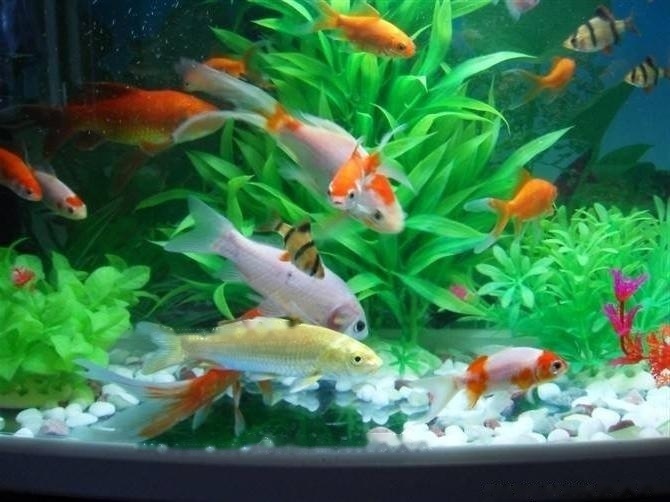
As the saying goes: To raise fish well, you must first raise water. A new fish tank must first cultivate nitrifying bacteria and establish a perfect nitrification system in order to provide a living environment for fish and aquatic plants. Nitrifying bacteria are divided into nitrite bacteria and nitrifying bacteria. The main function is to oxidize ammonia into nitrite, and convert the highly toxic ammonia into less toxic nitrate. In simple terms, it is to decompose and dilute the toxicity of water. Follow your pet editor to learn about it!
Basic understanding and function of nitrifying bacteria
1. It can decompose fish excrement and residual bait to produce ammonia (NH3). As long as the ammonia exceeds the safe concentration, it will cause considerable harm to fish, aquatic plants and the organisms in the fish tank.
2. There are two types of nitrifying bacteria that perform nitrification: Nitrite bacteria and Nitrobacter.
3. The effect of nitrous acid: Nitrosomonas can take ammonia as food under aerobic conditions, convert ammonia into nitrite, and obtain energy from it.
4. Nitric acid effect: Nitrobacter can convert highly toxic ammonia into nitrate. After the toxicity is diluted, the aquatic fish in the fish tank can only survive by waiting for the organisms.
5. It takes time to cultivate nitrifying bacteria in the tank, and the nitrification system will mature in 30-45 days.
Favorable environment for nitrifying bacteria cultivation
1. The most suitable temperature for nitrifying bacteria is 25 degrees, which is the living temperature of most tropical fish.
2. Nitrification can be carried out from 5 degrees to 35 degrees, and 25 degrees is the most suitable, so don't think that the nitrifying bacteria will not work in winter, they just reduce their activity.
3. Nitrifying bacteria do not like light. If conditions are available, it is best to create a completely dark environment. This is not a necessary condition.
4. Nitrifying bacteria will form a biofilm and will be adsorbed on the solid surface for reproduction, so we need to provide enough habitat for nitrifying bacteria in the fish tank.
The key factors of nitrifying bacteria culture
1. Temperature: It is better to control, because if you raise tropical fish, the water will be heated, which can be maintained by heating rods.
2. Water flow: Due to the sessile life characteristics of nitrifying bacteria, it must rely on water flow to transport the survival resources such as oxygen, ammonia and nutrients it needs.
3. Bottom sand: Nitrifying bacteria need the substrate very much, but the difference is that its purpose is not to forage, but the substrate can provide attachment, shelter and obtain the ammonia source and nutrients it needs source. Many nitrifying bacteria cannot reproduce until they find a suitable substrate, and cannot oxidize toxic substances such as ammonia.
4. Light: Unlike plants and photosynthetic bacteria, nitrifying bacteria do not have photosynthetic pigments, so they cannot use sunlight for photosynthesis to synthesize organic matter. Not only cannot use sunlight, but it is less suitable for sunlight exposure.
5. PH value: ph value will affect the growth and reproduction of nitrifying bacteria. Generally speaking, most nitrifying bacteria prefer to grow in a weakly alkaline environment, and nitrifying bacteria are suitable for growth around 6.5 ~8.5 degrees, the best value is about 7.5~8.2 degrees.
Cultivation of nitrifying bacteria and cleaning of filter media
1. The water filtration system is a breeding ground for nitrifying bacteria and should not be cleaned or replaced frequently. The ceramic ring and the biochemical ring should be placed at the bottom, and a layer of biochemical cotton should be placed on the upper layer to facilitate the cultivation of nitrifying bacteria.
2. It is recommended not to wash biochemical cotton, ceramic ring and biochemical ball together. Wash one of them first and then wash the other one after a few days. The pH of the bacteria will not change too much.
![[Dog Training 5] The training method of pet dog dining etiquette](/static/img/12192/12192_1.jpg)




